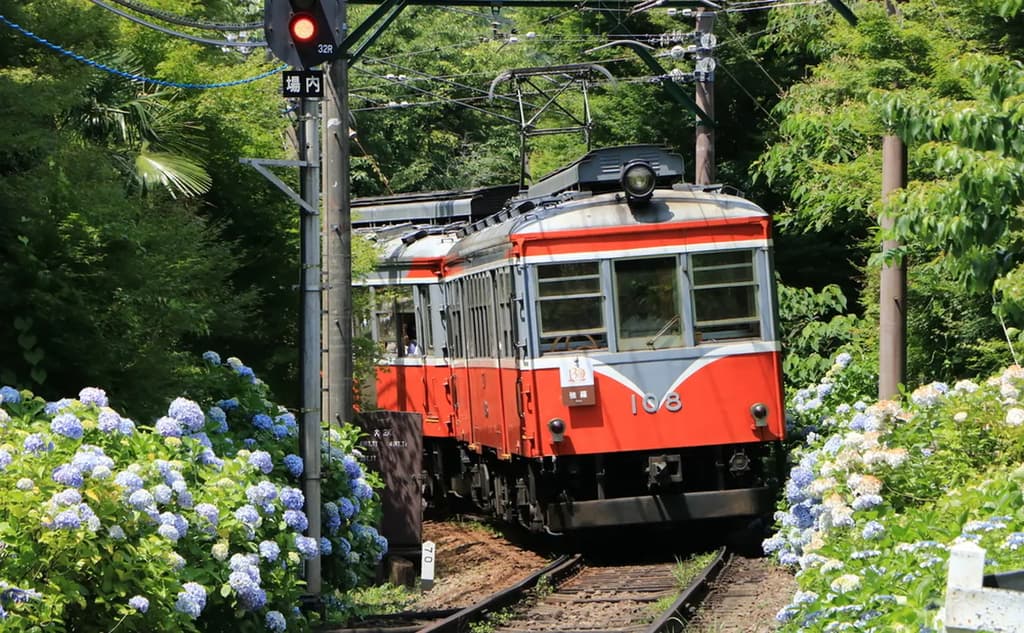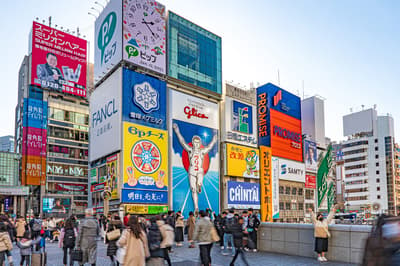Here are some of the popular sightseeing spots in Hakone that you should not miss if you are planning to visit Hakone.There are famous spots such as hot springs, Owakudani, and the Hakone Open-Air Museum, as well as Hakone’s unique rides such as the Hakone Tozan Train, cable car, and pirate ship.
Yumoto Area: The Gateway to Hakone
Hakone Yumoto Onsen
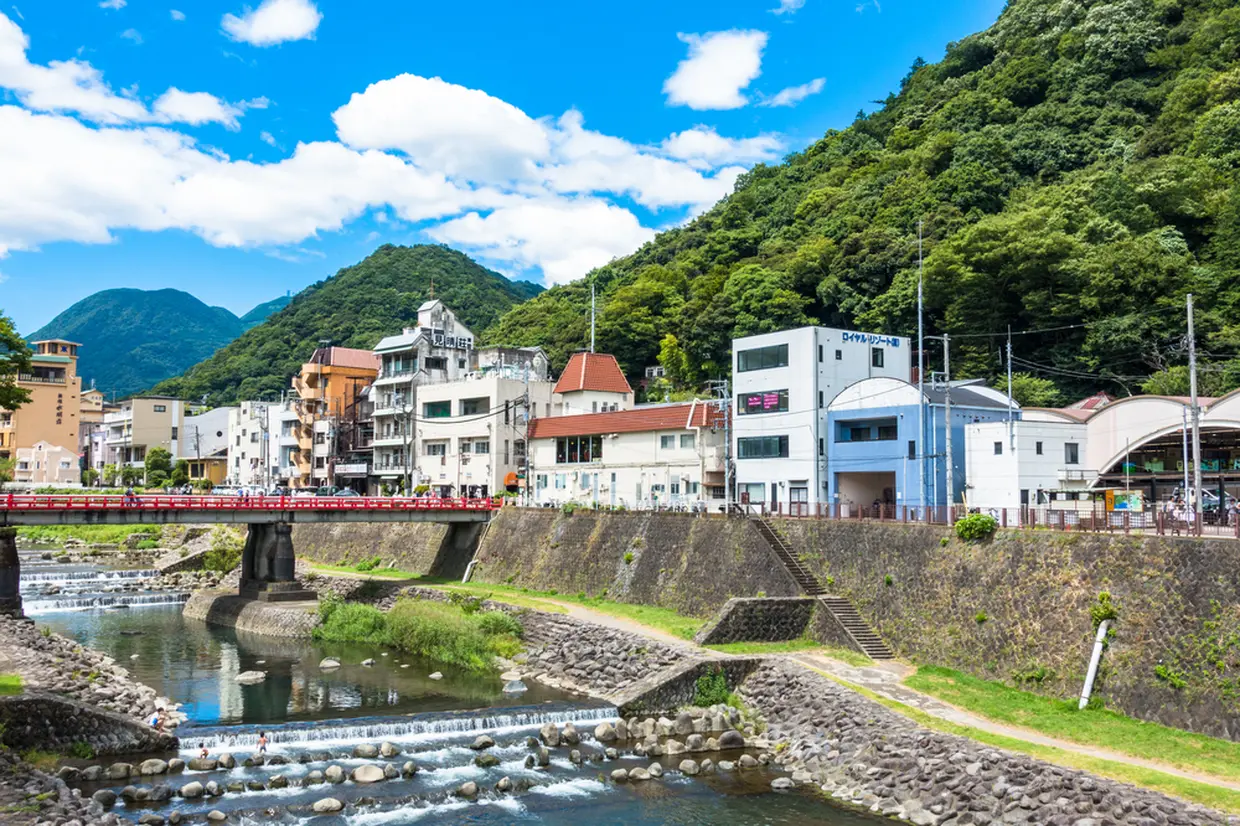
Hakone Yumoto Onsen, one of the oldest hot spring resorts in Japan, is located at the entrance to Hakone. It is a popular tourist spot due to its easy accessibility, only one and a half hours from Tokyo.
Hakone-Yumoto Shotengai (Shopping Street)
Hakone-Yumoto Shotengai is always crowded with tourists and is lined with Hakone souvenir stores. Onsen manju, kamaboko fish cakes, croquettes, and other delicious food unique to onsen resorts are also available for eating and walking around, which is one of the most popular ways to enjoy Hakone-Yumoto.
Hakone Tozan Railway

The Hakone Tozan Railway, which zigzags its way up the mountains of Hakone, is a must-see sightseeing attraction in Hakone. It connects Odawara and Gora. It is one of the most authentic mountain railways in Japan.
Forest Adventure HAKONE

It is an outdoor park in harmony with nature that is easily accessible by a 2-minute free bus ride from Hakone Yumoto Station. Adults can enjoy zip-sliding and suspension bridges in the great outdoors to the fullest. After a long day of walking, enjoy relaxing time in the hot springs.
Fukazawa Zeniarai Benten Shrine

Located just off the platform of Tonosawa Station, Fukazawa Zeniarai Benten Shrine is a sacred place surrounded by nature. Visitors wash their money with a ladle and tray provided in the shrine. It is said that you will be blessed with good fortune if you spend the money after washing it, so use it gracefully!
Sounji Temple

The temple is a 15-minute walk from Hakone-Yumoto Station, is designated as a protected habitat for the himeharuzemi (Euterpnosia chibensis, a sort of cicada) and you can hear the sounds of them in early summer.
Amidaji Temple

This temple is also famous as the hydrangea temple in Hakone. Various flowers, plants, and trees bloom throughout the year, and the 300-plus year old building with a sense of history is also an attraction.
Hakone Yuryo

This is a onsen spot with 19 private open-air baths, one of the largest scale around Tokyo area. You can enjoy a large public bath, Japanese hearth dishes, relaxation, and a full range of other facilities. The large baths include an open-air bath, a Shigaraki bath with high heat-keeping effects, and a sauna.
Miyanoshita and Kowakidani Area: The Retro Townscape
Okada Museum of Art

This is an art museum located in Kowakudani, Hakone. It houses a collection of art works from ancient to modern times, mainly from Japan, China, and Korea. It is a popular sightseeing spot.
Hakone Kowakien Yunessun
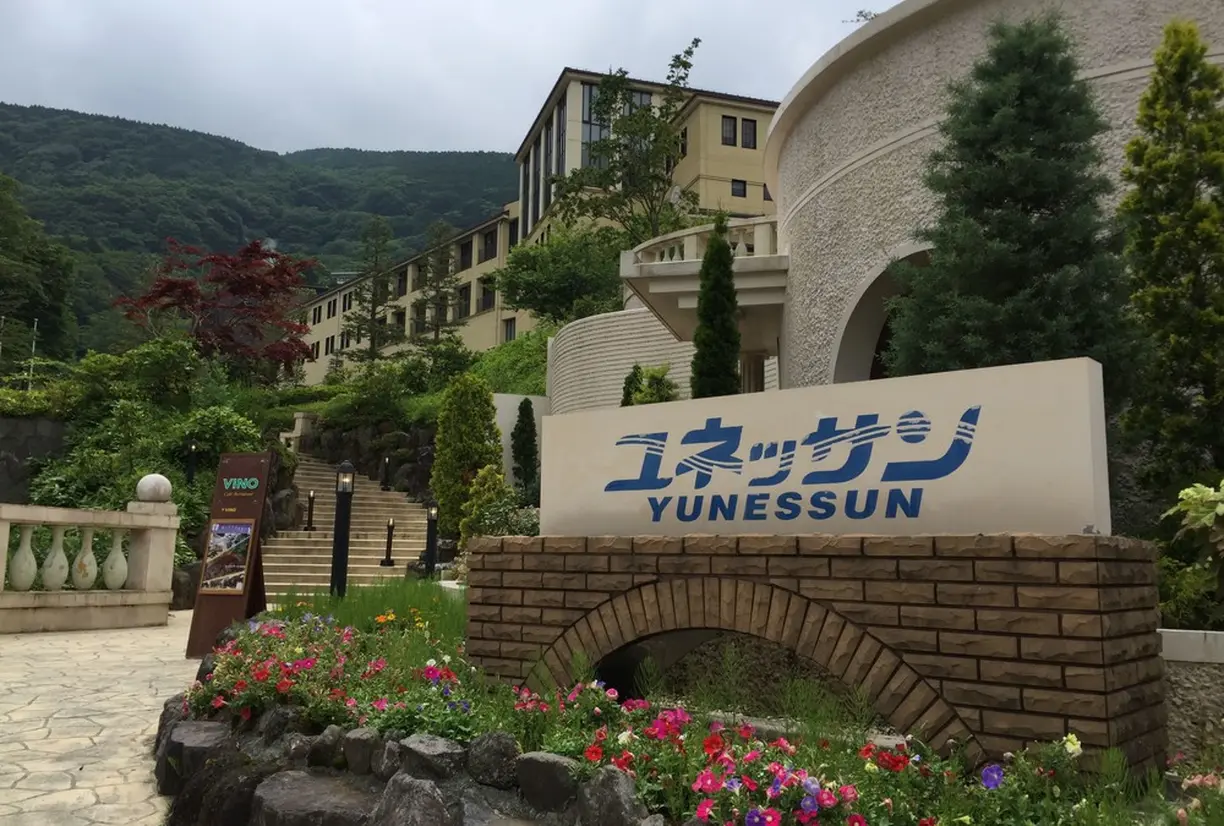
Natural hot springs that spring from Hakone and unique hot springs that can be enjoyed in swimsuits are gathered here. Both day trips and overnight stays are possible, making this a popular hot spring theme park for families and couples.
Kumano Shrine

Kumano Shrine is located on the way back to Miyanoshita station from Miyanoshita Hakone Shrine, right next to Fujiya Hotel, surrounded by greenery and popular among tourists who love hot springs. Kumano Shrine is also located in Yumoto, Tonosawa, and Ashinoyu.
Fujiya Hotel

This is a famous long-established classic hotel in Miyanoshita, established in 1878. It is known that Helen Keller stayed at the hotel, and its 100-year-old traditional curry and famous apple pie are very popular.
Mt. Sengen hiking trail

This is a hiking trail that connects the Kowakudani Station of the Hakone Tozan Railway to Mt. Sengen. Visitors can enjoy walking while admiring the flowers and trees of the four seasons.
Dogashima Valley Promenade

A walking trail leads from Dogashima Onsen along the Hayakawa Valley, allowing visitors to experience an extremely deep valley.
Owakudani and Gora Area: Exploring the Beautiful Parks in the Onsen Region
Owakudani

Owakudani was created by a phreatic explosion of the Hakone volcano about 3,000 years ago. The famous black egg, boiled in sulfurous waters, giving the egg shells a distinctive black color, is said to prolong one’s life by 7 years. Called Jigokudani (the Valley of Hell) in ancient times, Owakudani is one of Hakone’s most popular tourist spots.
Hakone Open Air Museum
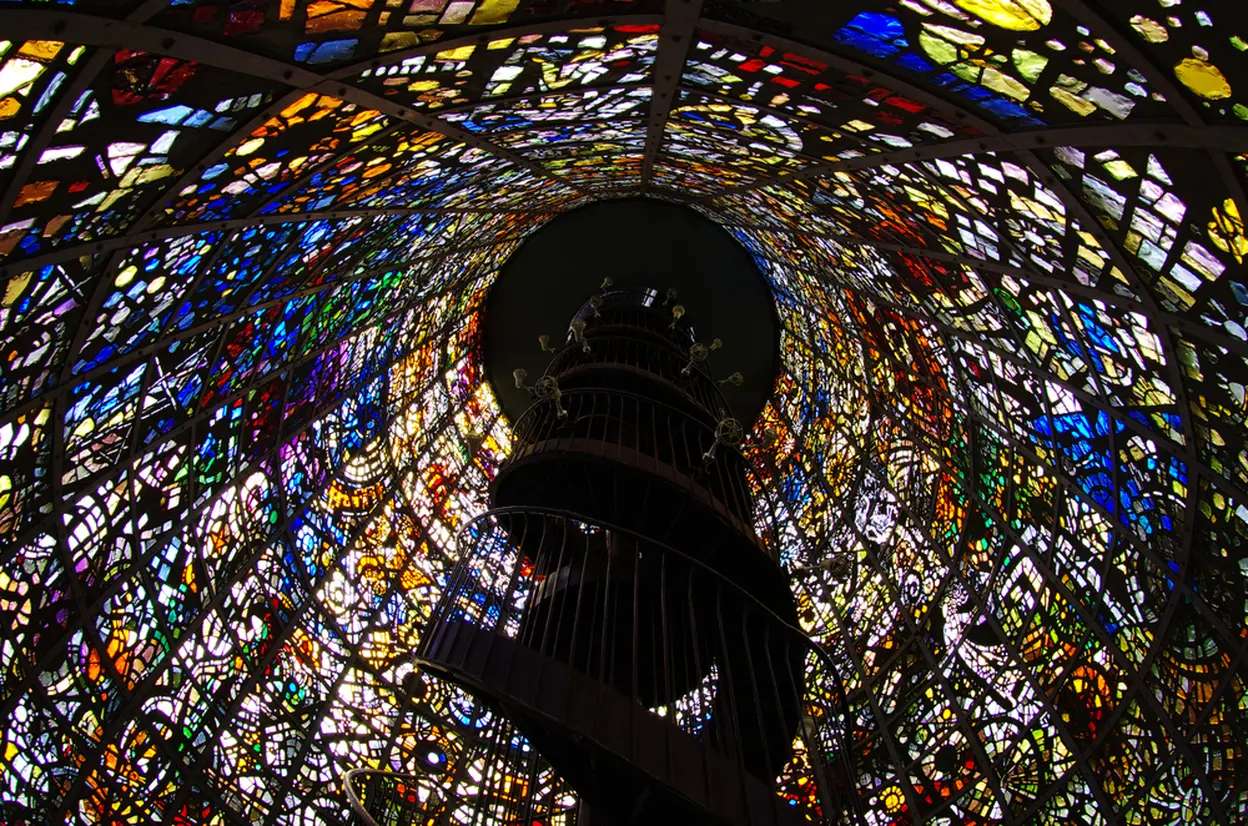
This is an open-air museum where visitors can view the sculptures of the world’s great masters. The outdoor exhibition space is a 70,000 ㎡ lush garden with a view of the Hakone Mountains, where approximately 120 masterpieces by leading modern and contemporary sculptors are on permanent display.
Hakone Gora Park

Opened in 1914, Hakone Gora Park offers a variety of flowers such as cherry blossoms, azaleas, hydrangeas, autumn leaves, and roses, as well as facilities such as tea ceremony, pottery and glass blowing experience, and a botanical garden.
Hakone Museum of Art
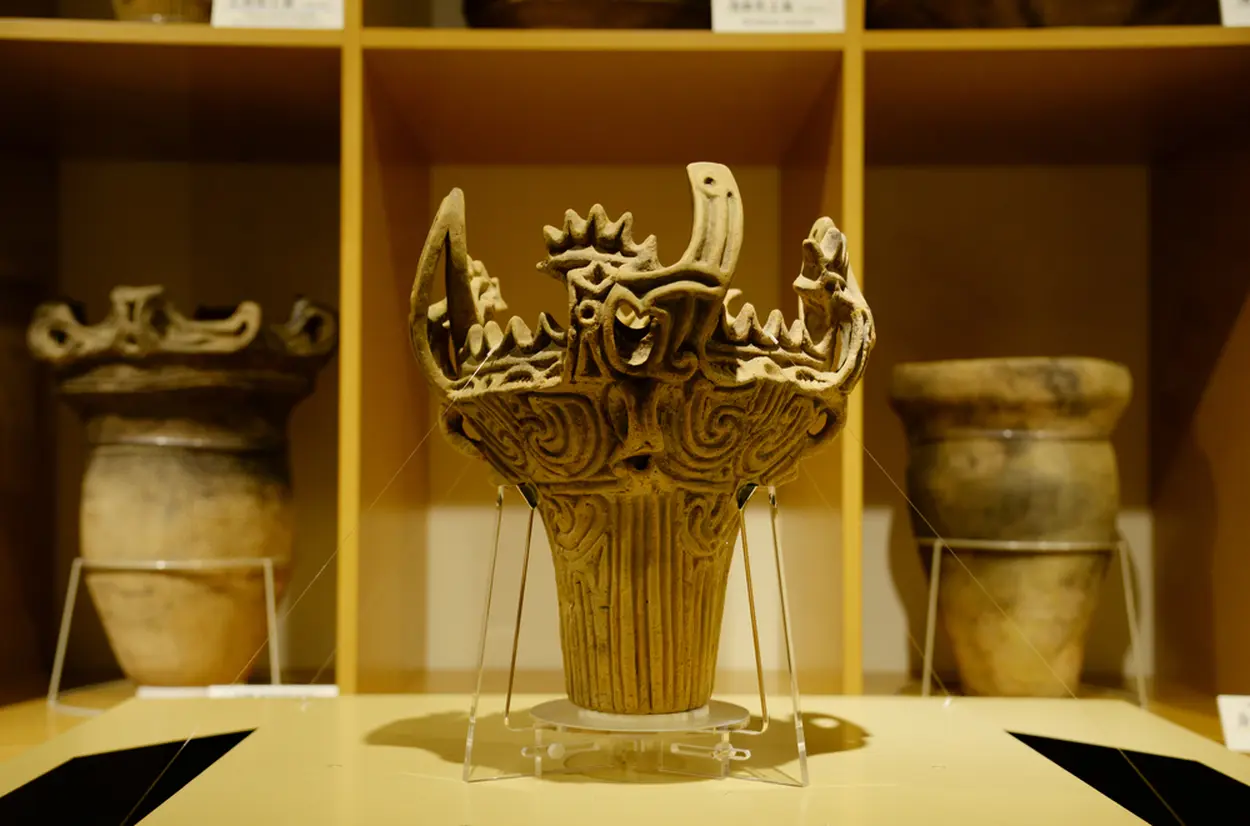
Opened in 1952, it is the oldest museum in Hakone. The museum exhibits about 100 pieces of pottery ranging from Jomon period earthenware to Edo period pottery.
Hakone Ropeway
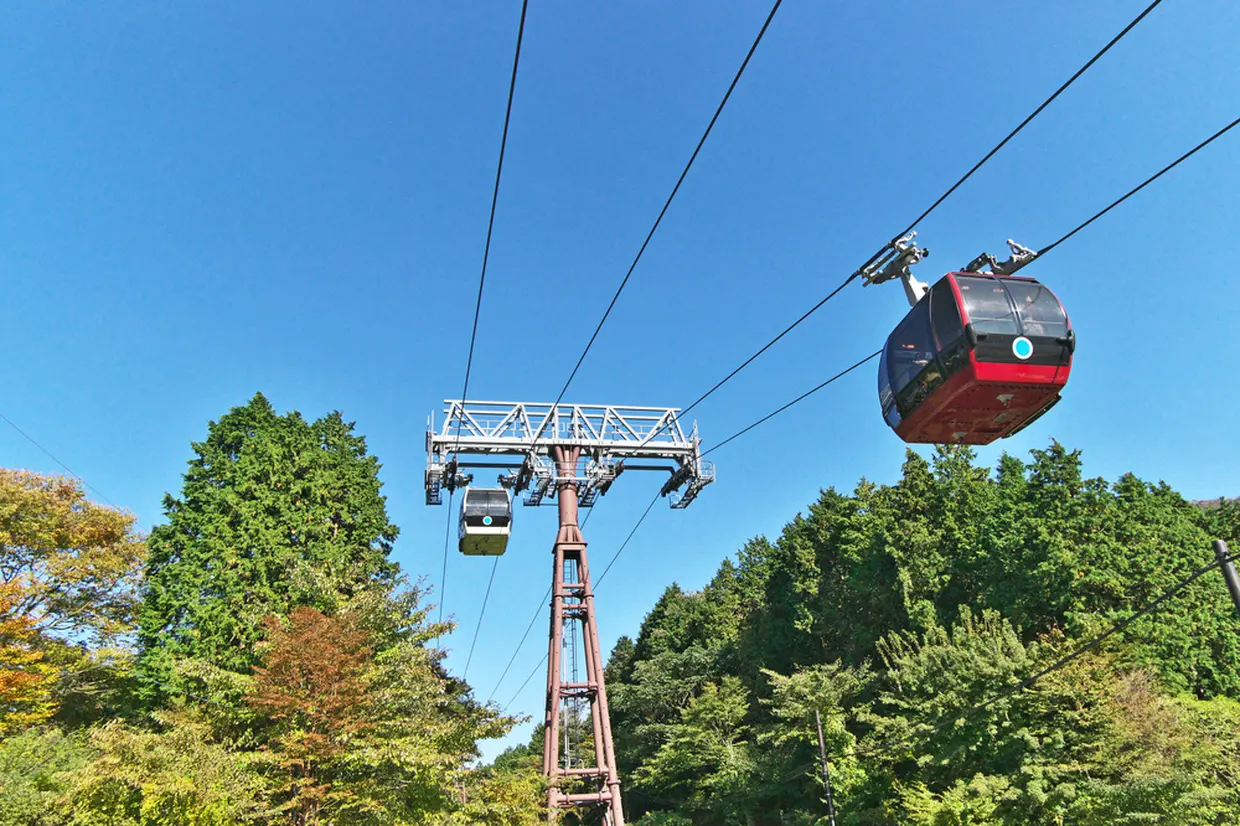
The Hakone Ropeway is the best way to get to Owakudani, and it takes about 25 minutes from Souunzan to Owakudani, Ubako, and Togendai. You can enjoy beautiful Mt. Fuji, the smokes of Owakudani, and the dynamic panoramic view of Lake Ashinoko.
Sengokuhara Area: The Town of Nature and Art
Pola Museum of Art
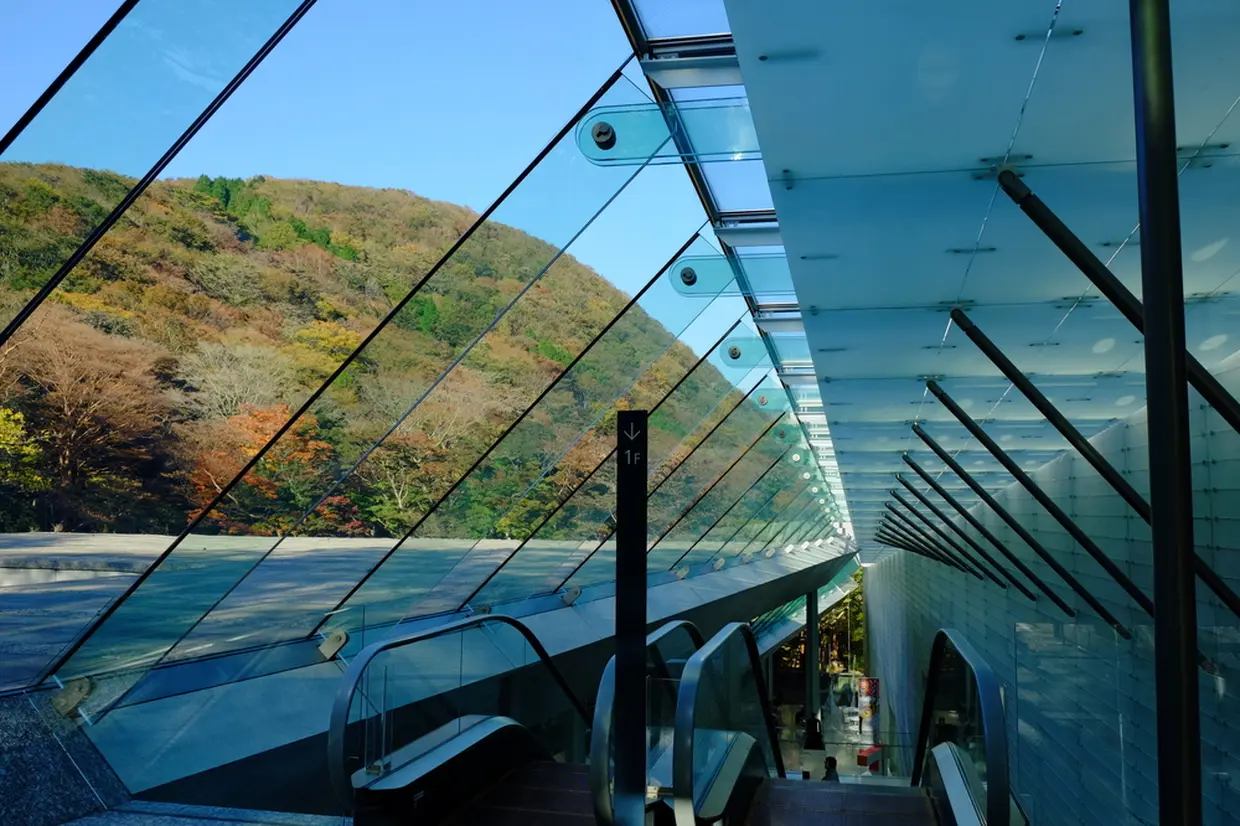
Opened in 2002 in Sengokuhara, the museum has a collection of about 10,000 Western paintings, mainly Impressionist paintings. It is said to have one of the largest collections of Impressionist paintings in Japan.
Lalique Museum, Hakone
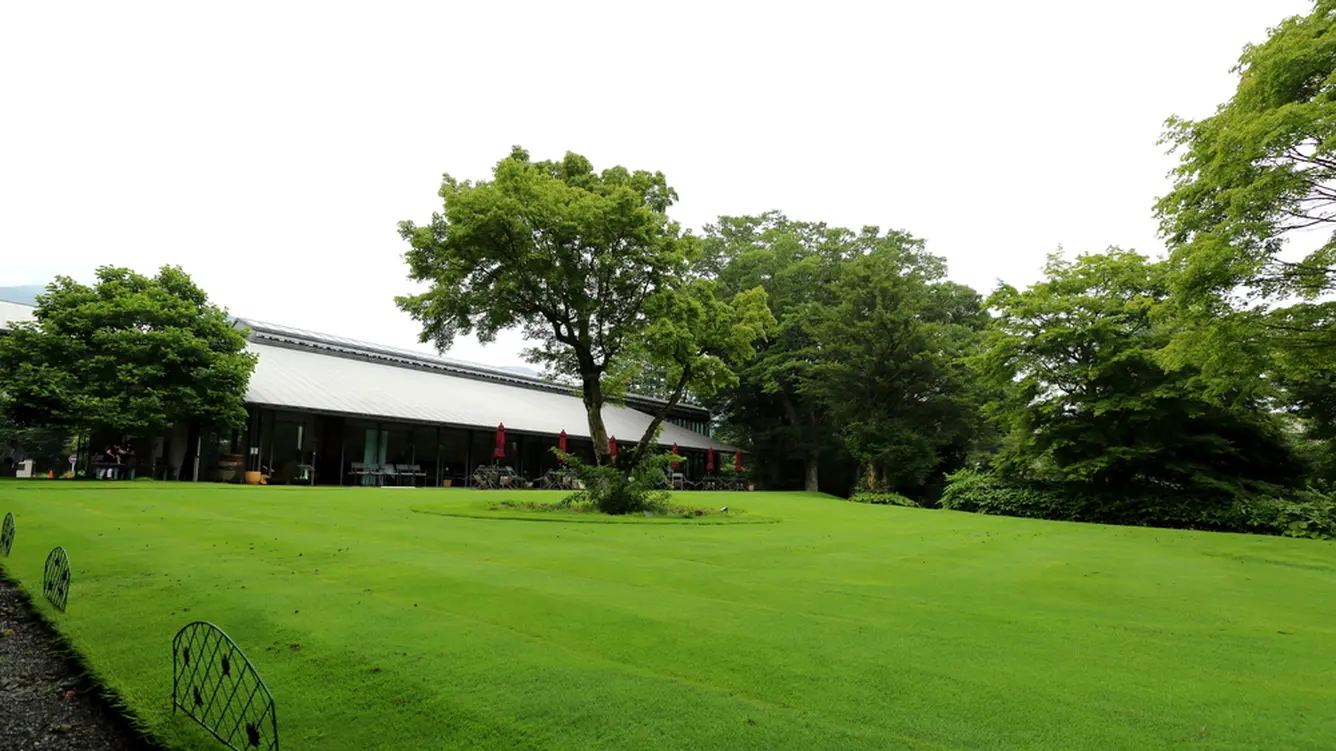
The museum exhibits a variety of glass artworks by René Lalique, including jewelry, perfume bottles, and vases. The museum store offers a wide range of items from tasteful sundries to food, making it the perfect place to pick up souvenirs from Hakone.
Hakone Venetian Glass Museum

This is the first museum in Japan dedicated to Venetian glass. With a museum store and workshops, visitors can deeply enjoy glass art.
Choanji Temple

The temple was built in Sengokuhara in 1658, and is surrounded by nature in a quiet atmosphere. The temple is famous for its beautiful seasonal scenery, especially for its autumn foliage.
Hakone Botanical Garden of Wetlands

This botanical garden focuses on plants that grow in water wetlands such as rivers and lakes. In addition to 200 species of wetland plants scattered throughout Japan, 1100 species of grassland, forest, and alpine plants are collected here.Please note that the park is closed during the winter season.
Lake Ashinoko Area: Home to a God of Marriage
Hakone Shrine

Hakone Shrine is called the best energy place in Hakone and offers a wide range of blessings such as with child, good luck, fulfillment of one’s desire, traffic safety, luck in victory, match-making, good marriage, and so on. It is a must-visit spot when you come to Hakone, as it can improve your overall luck!
Kuzuryu Shrine

The shrine is named after a poisonous dragon that ran rampant in Lake Ashinoko during the Nara period (710-794) and was worshipped as Kuzuryu-no-Okami by the priest Mangan after he subdued the dragon. It is known as the god of good matchmaking. The shrine is crowded with worshippers praying for the fulfillment of their love during the monthly festival.
Hakone Sightseeing Cruise

Three shore excursions modeled after European sailing battleships operate on Lake Ashinoko in Hakone. Tourists favor them for the opportunity to enjoy water exploration, making them very popular.
Hakone Lake Ashinoko Boat Cruise
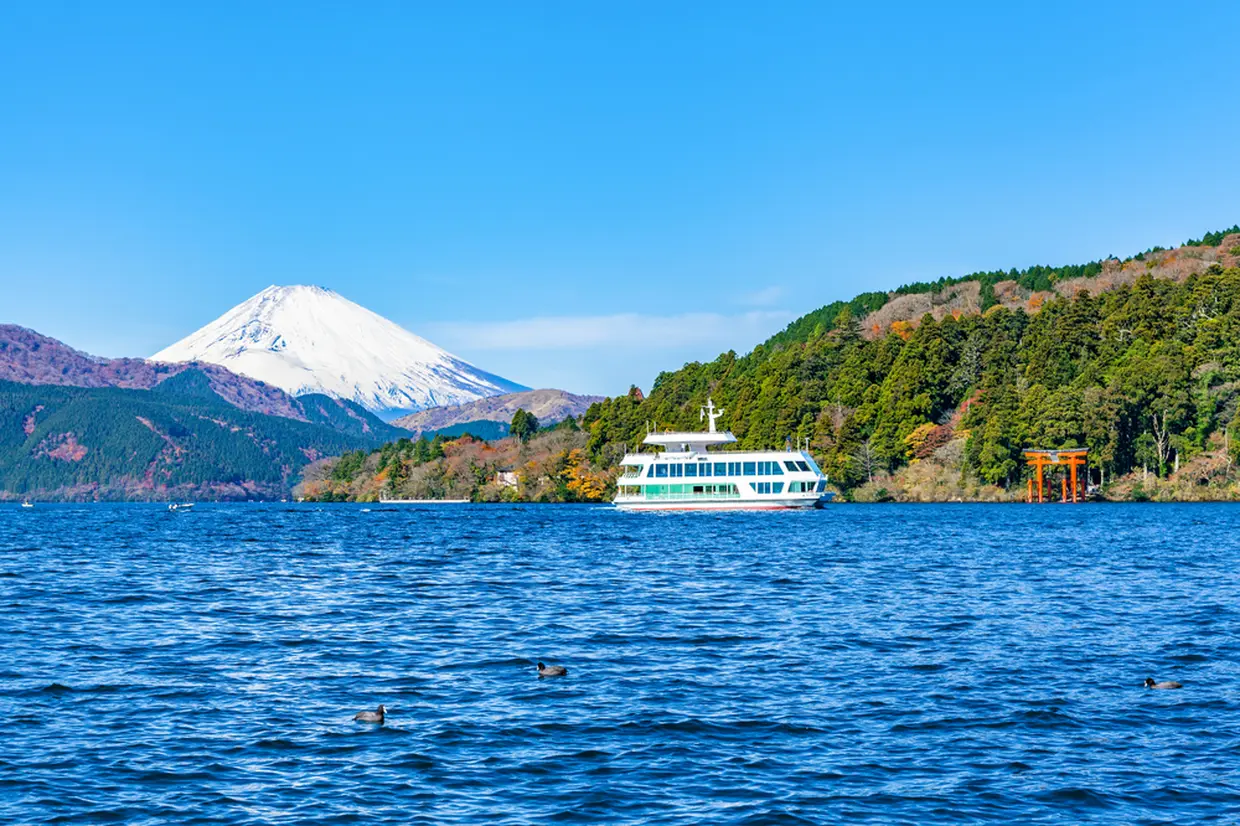
In addition to regular boats that go to Hakone-en and other places, the boat operates on a 30-minute round trip course. For those who want to enjoy cruising around Lake Ashinoko, please take a ride.
Hakone Sekisho
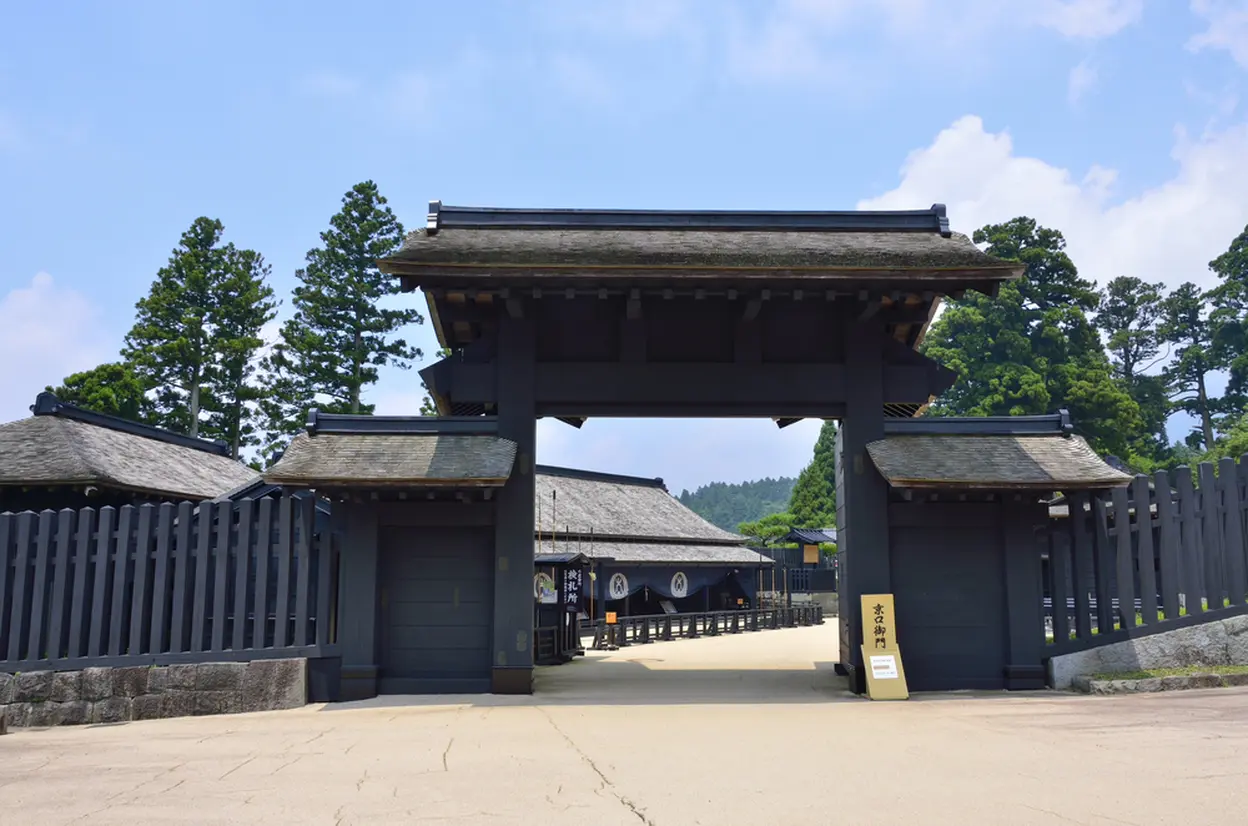
It is the gateway to travel to Lake Ashinoko in Hakone and is an important site in the history of transportation in the Edo period. It invites you to a trip to Hakone full of historical romance.
Hakone-en aquarium

This aquarium is located at the highest elevation in Japan. The aquarium has a large collection of 32,000 fish of 450 species from around the world, and cute Baikal seals welcome visitors.
Hakone-en

It is a resort complex of cottages, a botanical garden, an aquarium, and a shopping mall operated by Prince Hotel, where visitors can enjoy themselves all day long.
Gotemba and Odawara Area: Ideal Rest Stop En Route to Hakone
Gotemba Premium Outlet

It is a 20-minute drive from Sengokuhara, and there is a direct bus service from Tokyo for easy access. It is a huge facility with about 210 brand shops and restaurants.
Suzuhiro Kamaboko Museum

Suzuhiro Kamaboko Museum is a facility where you can enjoy shopping for kamaboko, dried fish, confections, and sundry goods, as well as a restaurant where you can enjoy seafood, and experience making kamaboko. The museum is popular for its fish cake production process tours, handmade craftsman tours, and handmade fish cake workshops.
Odawara Hayakawa Gyoson

This is a popular sightseeing spot where you can enjoy seafood dishes from Odawara and Sagami Bay and get souvenirs.
Odawara Flower Garden

Odawara Flower Garden is a park where flowers can be enjoyed all year round. Especially, a tropical dome greenhouse where tropical plants can be seen, and a ume (Japanese apricot) garden along a mountain stream where about 300 varieties of ume trees bloom are recommended!
